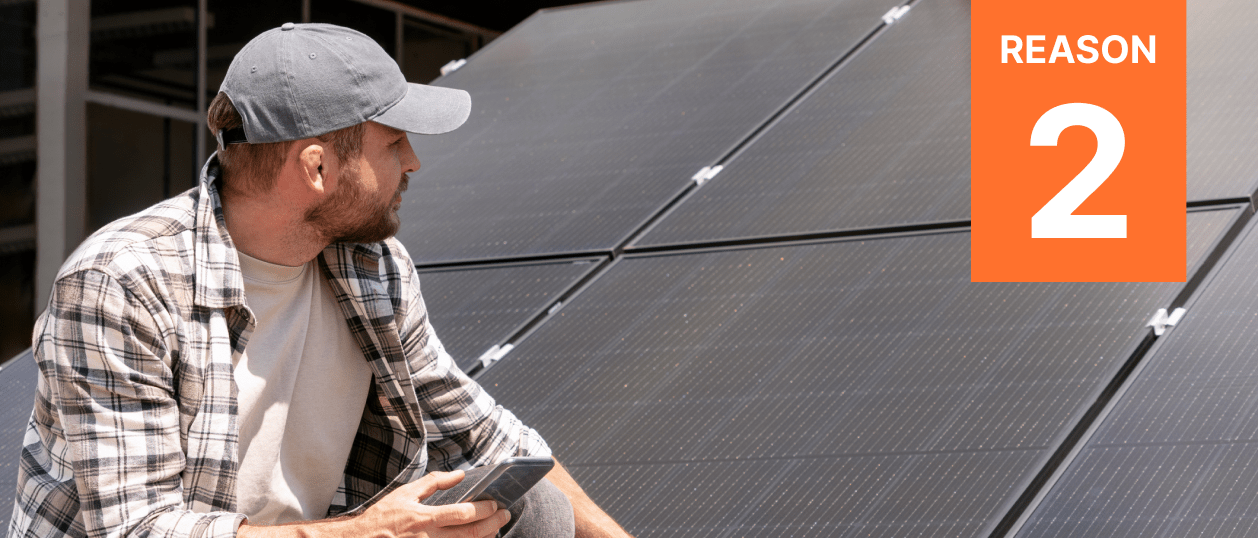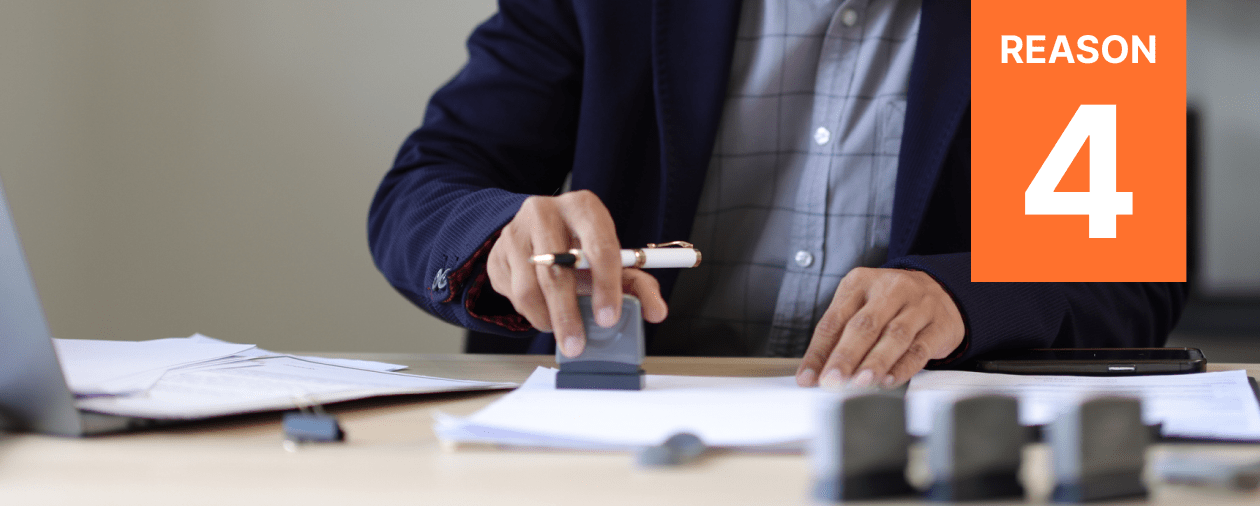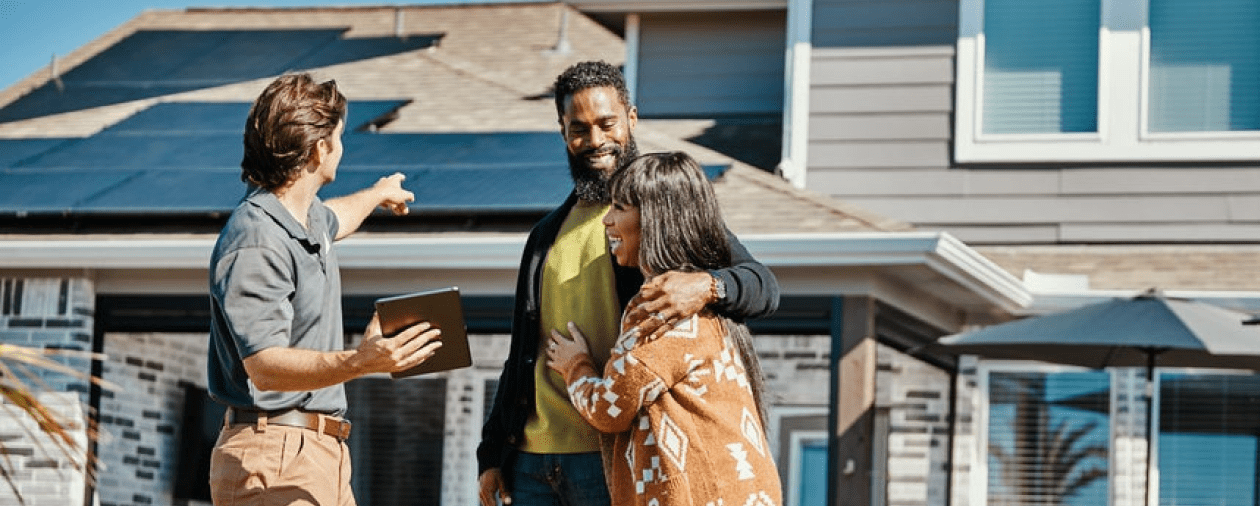

A do-it-yourself (DIY) solar installation may seem like a good idea if you’re handy with home improvements. But before you invest your time and money, it’s important to understand the financial and safety risks.
Nearly three-quarters of Americans take on DIY projects, the most popular being firepit building and wallpapering.* Some want to tackle a solar installation, too, since it appears, at first glance, to save thousands of dollars.
But few households — about 0.3 out of 1,000 — ultimately attempt to install solar on their own, according to a survey from This Old House.* Why? In the end, many find that the risks outweigh the potential benefits of DIY solar.
Here are five good reasons to put your ladder and electrical pliers away and instead hire a professional, like Sunnova.
1. A Solar Installation Isn’t Easy Work

Installing solar panels is not a simple plug-and-play activity but requires electrical and solar energy expertise. Mistakes can jeopardize your roof’s structural integrity, create leaks, cause fires, and even lead to electrocution.
Also, prepare to work your muscles. Each solar panel you lug up the ladder weighs about 40 pounds. You’ll be hauling as many as 26 panels for a 3,000 square-foot-house.*
2. Choosing the Right Solar Panels Requires Expertise

If purchase price is your top consideration, beware. You could end up with inferior solar production and, therefore, less control over your energy costs. Price is, of course, important, but it’s also crucial to look at panel efficiency, the manufacturer's reputation, and what works best with your home. You may also need to carefully examine the system warranty — not all manufacturers honor a DIY solar power installation.
There are more than 350 solar manufacturers worldwide,* so sorting out who makes the best panels is a big task. And if you’re unfamiliar with solar technology, it’s easy to miss substandard components. For example, some imported panels substitute copper wiring for more easily fatigued aluminum wiring, but they both look the same on the surface.
When choosing a manufacturer or distributor, you must also consider shipping. How far will the panels travel to reach you? The risk of damage may increase with the miles of transport.
3. The Wrong System Size Can Cost You

Can you accurately determine how many panels you need for your home? Calculators abound online, but they only offer rough estimates. A range of factors must be considered, including your energy usage, roof size, panel efficiency, angle to the sun, and rooftop features, such as the placement of chimneys or turrets.
Installing too many solar panels wastes money; installing too few underpowers your home and forfeits your opportunity to capture as much free energy from the sun as possible.
Right-sizing your solar installation is only half of the task. It’s also important to choose the appropriate inverter — one that matches your solar system’s capacity — and install it correctly. Missteps are easy in this stage. For example, something as simple as poor ventilation can cause your inverter to overheat and reduce solar production.
4. Navigating Government Approvals Takes Time, Patience and Know-How

You can undertake many home improvements without government approvals. That’s not the case with a solar installation. A miswired system can harm not only you but also utility workers doing repairs on the nearby grid.
Before you start, you'll need to understand your jurisdiction's permits and approval requirements. This process can be easy or challenging, depending on where you live.
Generally, to begin, you’ll need a permit from your local building department, which will inspect the system after it’s installed. If your solar panels connect to the power grid — most do — you must also secure an interconnection agreement from your local electric utility.
American households have been adding solar at a tremendous pace. From 2010 to 2023, the number of residential solar installs rose from 89,000 to 4.7 million.* Unfortunately, staffing at permitting agencies hasn’t always kept pace, slowing approvals and making it hard to get answers to your questions.
Acquiring utility interconnection agreements can be even more difficult, as they require technical know-how about utility safety requirements. The utility needs assurance that your system does not pose any safety hazards to its grid. Some utilities require surety bonds as part of the approval process. Securing interconnection agreements is one of the biggest delays for solar projects, says the Interstate Renewable Energy Council.*
Last, don’t forget to check in with your homeowners association. Some want panels hidden from street view and some try to disallow them altogether.
5. Forfeiting Incentives with Do-It-Yourself Solar

You probably decided to do it yourself to save money. But unless you’re well-versed in government incentives and financing options, you may leave money on the table. An abundance of utility, city, county and state incentives, in addition to the 30% federal tax credit, are available to those who purchase their system via cash or loan.*
Assistance can take various forms: grants, rebates, tax breaks, property tax exemptions, renewable energy credits, and net metering. Unfortunately, navigating the qualifications and application process is often complicated.
The Benefits of Hiring a Solar Expert

Given the complexities of installing solar, it’s unsurprising that the U.S. Department of Energy recommends that households contract with certified solar professionals, such as Sunnova.
We work with reputable dealers and installers who undergo a strict vetting process and are held to high industry standards. A national company like Sunnova brings to your project:
- A deep understanding of solar manufacturers and their products to ensure your solar panels fit your unique needs and setting.
- Expertise in right-sizing your system to capture the maximum amount of emission-free energy from the sun.
- A team of skilled workers with the proper equipment and certifications to ensure your solar panels are correctly installed to protect your system, your roof, and the manufacturer's warranty on your panels.
- Freedom from the headache of navigating permits and approvals.
- Working knowledge of the current local, state, federal, and utility incentives to minimize the cost of your installation.
Here’s one more important consideration: If you’re concerned about the upfront capital costs of installing solar panels, consider a company that offers leases or power purchase agreements (PPA). At Sunnova, we offer both (read more here). Under these arrangements, you forgo the costs of equipment and installation and pay either a flat monthly fee or only for the power your system produces.

The Bottom Line on Do-It-Yourself Solar
Ultimately, your decision depends on your tolerance for financial and safety risks, technical know-how, and willingness to devote considerable time researching, planning, buying, installing, and permitting your solar installation.
If you’re still eager to give DIY solar a try, consider taking on smaller projects. You’ll discover many solar kits are available for sheds, RVs, boats, and other small applications.
Ready to make the sunshine work for you?

